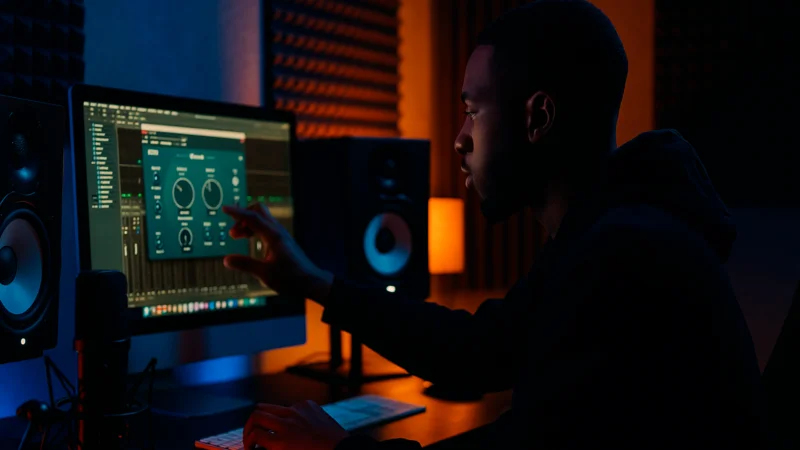
5 Ways to Monetize Your Music (Without Going Viral)
Monetize your music without going viral, learn 5 practical strategies to turn one single into multiple income streams.
Reverb is one of the most powerful effects in music production. When used right, it gives your vocals space, character, and emotion. When used wrong, it muddies your mix and kills the clarity. This guide will give you reverb mixing tips that every independent artist should know especially if you’re recording at home.

Reverb (short for reverberation) is the sound that bounces around after the original sound is made. Imagine clapping your hands in a small room vs. a church hall. That “tail” or echo you hear is reverb. In music, we use it to simulate different spaces and give vocals and instruments a sense of depth.
Without reverb, your vocals sound dry and flat. Too much, and they get lost in the mix. Reverb mixing tips are all about balance: you want your track to feel alive, but still clear and punchy.
Each reverb type has a unique character. Here are the most common ones:
When in doubt, start with plate reverb for vocals it’s a classic.
One of the best reverb mixing tips: set up a reverb bus. That means you route multiple tracks (like all vocals) into a single reverb channel. This keeps your mix cleaner and more consistent, while saving CPU power.
Steps:
Pre-delay is the time between the dry vocal and when the reverb starts. Setting a short pre-delay (around 20-50ms) helps the vocal stay up front, while still giving space.
Too little pre-delay = washed out mix.
Just enough = depth without blur.
A mistake many beginners make is using reverb as-is. But reverb has a wide frequency range especially low-end that can clutter your mix. Use an EQ after your reverb plugin to:
This is one of the most overlooked reverb mixing tips, but makes a huge difference.
Want your hook to hit harder or the verse to feel more intimate? Automate the amount of reverb. You can make the reverb more intense in the chorus, or dial it back during a personal line in a verse.
Dynamic reverb = dynamic emotion.
You don’t need expensive plugins to get great results. Some solid free options:
Always experiment just keep your ears sharp.
If your mix sounds “cloudy,” try reducing reverb. It’s tempting to make everything sound dreamy, but often, clarity comes from space.
Pro tip: If you mute your reverb bus and the mix suddenly sounds way tighter… you probably overdid it
Learning how to control reverb is one of the most powerful reverb mixing tips for home artists. With a few adjustments—like pre-delay, EQ, and bus routing you’ll go from amateur-sounding to professional polish.
I work with independent artists from around the world, helping them shape their sound with professional mixing, mastering, and strategy. If you’re serious about improving your vocals and growing your music career, click here to work with me.

Monetize your music without going viral, learn 5 practical strategies to turn one single into multiple income streams.

Discover essential vocal recording tips to improve your home studio and capture clean vocals with the mic you already have.

Discover why music artist branding is essential before releasing your first tracks, build recognition and attract loyal fans.

Learn how to release a single with purpose and strategy. Discover how independent artists can turn one song into multiple income streams.